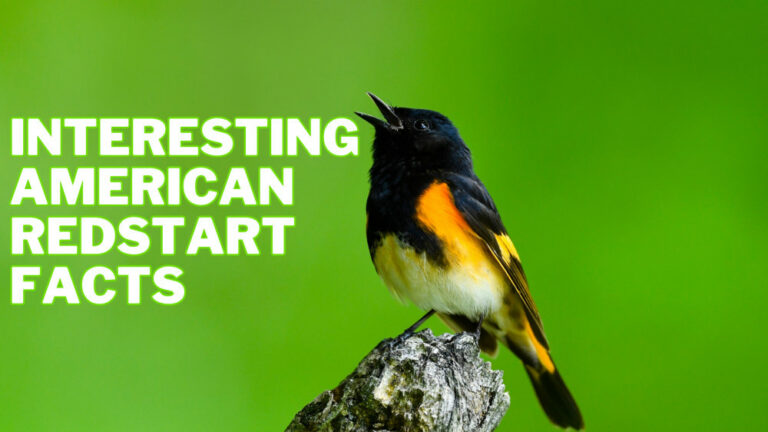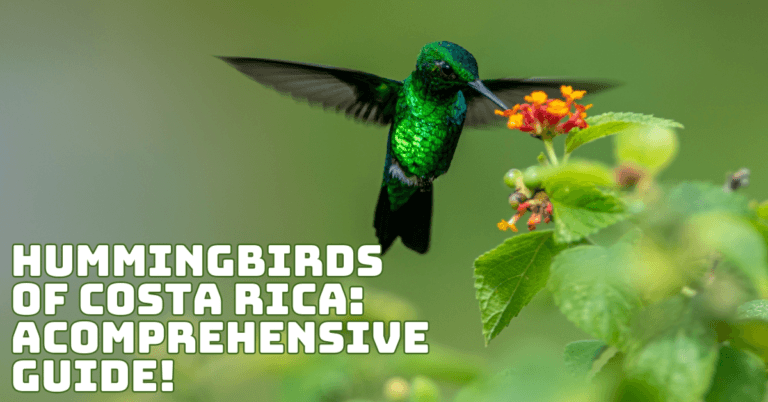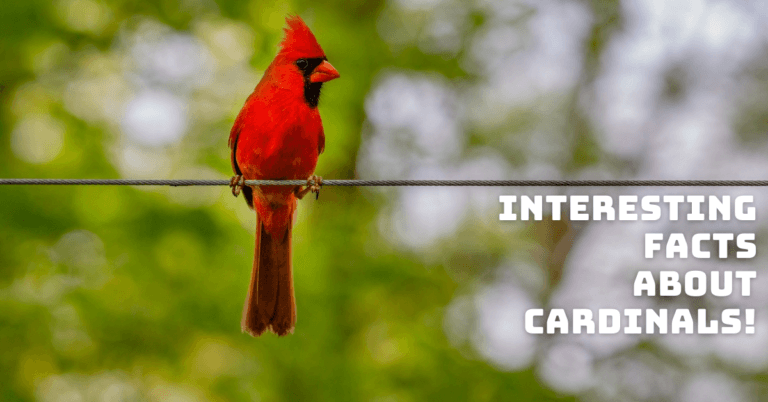Largest Owls In The World
Largest Owls In The World: Majestic Giants Of The Wild
With their enigmatic presence and captivating beauty, owls are among nature's most fascinating creatures.
Among the vast diversity of these nocturnal birds, the largest owls in the world stand out as majestic giants of the wild.
From the impressive wingspan of the Eurasian Eagle Owl to the powerful build of the Great Horned Owl, these remarkable birds command attention.
This article explores the largest owl species worldwide, delving into their unique traits, habitats, and crucial roles in their ecosystems.

Are Owls A Good Omen?
The symbolism of owls as omens varies across cultures, with both positive and negative associations:
Positive Associations With Owls
Wisdom And Knowledge
Owls symbolize wisdom and intelligence in many cultures, especially Ancient Greece. The goddess Athena, associated with wisdom, was often depicted with an owl.
Protection
In some Native American traditions, owls are considered protectors and guides. They are believed to watch over people and offer insight during times of uncertainty.
Spiritual Connections
In some spiritual beliefs, owls are considered messengers between the heavenly and earthly domains, signifying increased spiritual development and insight.
Negative Associations With Owls
Death And Bad Luck
In some cultures, particularly African and European folklore, owls have been linked to death or misfortune. Their nocturnal nature and eerie calls were sometimes thought to signal impending death or disaster.
Mystery And Fear
Due to their silent flight and activity during the night, owls are often associated with the unknown, darkness, or hidden dangers in some traditions.
Whether owls are seen as a good or bad omen depends largely on the cultural context and individual beliefs. For many, they represent wisdom, mystery, and spiritual depth.
What Do Owls Eat?
Owls are fascinating predators with varied diets that reflect their adaptability and hunting prowess. Here are detailed points about what owls typically eat:
1. Rodents
Prevalence
Rodents comprise a significant portion of an owl's diet, especially in temperate regions. Species like the Barn Owl can consume several hundred rodents a year, making them essential for controlling rodent populations.
Hunting Technique
Owls use their acute hearing and silent flight to locate and ambush rodents. They can hear the faintest sounds of a rodent moving in grass or underbrush, allowing for stealthy approaches.
2. Birds
Diverse Prey
Larger owls, such as the Great Horned Owl, can take down larger birds, including ducks and geese. Smaller owls may prefer smaller songbirds, using their agility to outmaneuver them in flight.
Hunting Technique
Owls hunt by silently flying, using keen night vision and excellent hearing to locate prey. They ambush from perches, seize with powerful talons, and often swallow prey whole.
3. Insects
Dietary Importance
Insects can be especially vital for smaller owls, such as the Western Screech Owl, particularly in summer when these creatures are abundant. They are a good source of protein and can be easier to catch than mammals.
Hunting Technique
Owls catch insects by silently swooping down from perches or gliding mid-flight. They use their sharp vision and hearing to detect movement and capture insects with their talons or beaks.
4. Small Mammals
Variety of Prey
Owls can feed on small mammals such as squirrels, rabbits, and even young foxes in addition to the usual rodents. Larger owls are more capable of tackling larger prey.
Hunting Technique
Owls hunt small mammals by silently flying or perching, using keen hearing and night vision to detect movement, then swiftly pouncing with sharp claws for a quick capture and kill.
5. Reptiles And Amphibians
Seasonal Feeding
Owls may consume more reptiles and amphibians during warmer months when these animals are more active. This diet can vary significantly depending on geographical location.
Hunting Techniques
Owls often hunt near water sources to catch frogs and toads, using their sharp vision and quick reflexes to snatch them.
6. Fish
Specialized Species
Fish Owls are specifically adapted to hunt fish. They feature long, powerful talons and a keen ability to spot movement in the water. They are often found near rivers, lakes, or coastal areas.
Hunting Techniques
They may perch silently on branches overhanging water, waiting for the right moment to dive and catch their prey.
7. Carrion
Survival Strategy
Owls will scavenge carrion in harsher environments or during food scarcity. While they prefer fresh kills, they can consume carcasses, showcasing their adaptability.
Hunting Techniques
Owls may scavenge carrion by locating dead animals using their keen eyesight or smell, then descending to feed, tearing flesh with their sharp beaks and avoiding competition from other scavengers.
Largest Owls In The World
Owls are fascinating creatures that embody the mysteries of the night. Each species boasts its distinct characteristics, making them not only remarkable hunters but also vital components of their ecosystems.
Here are the top largest owls in the world:
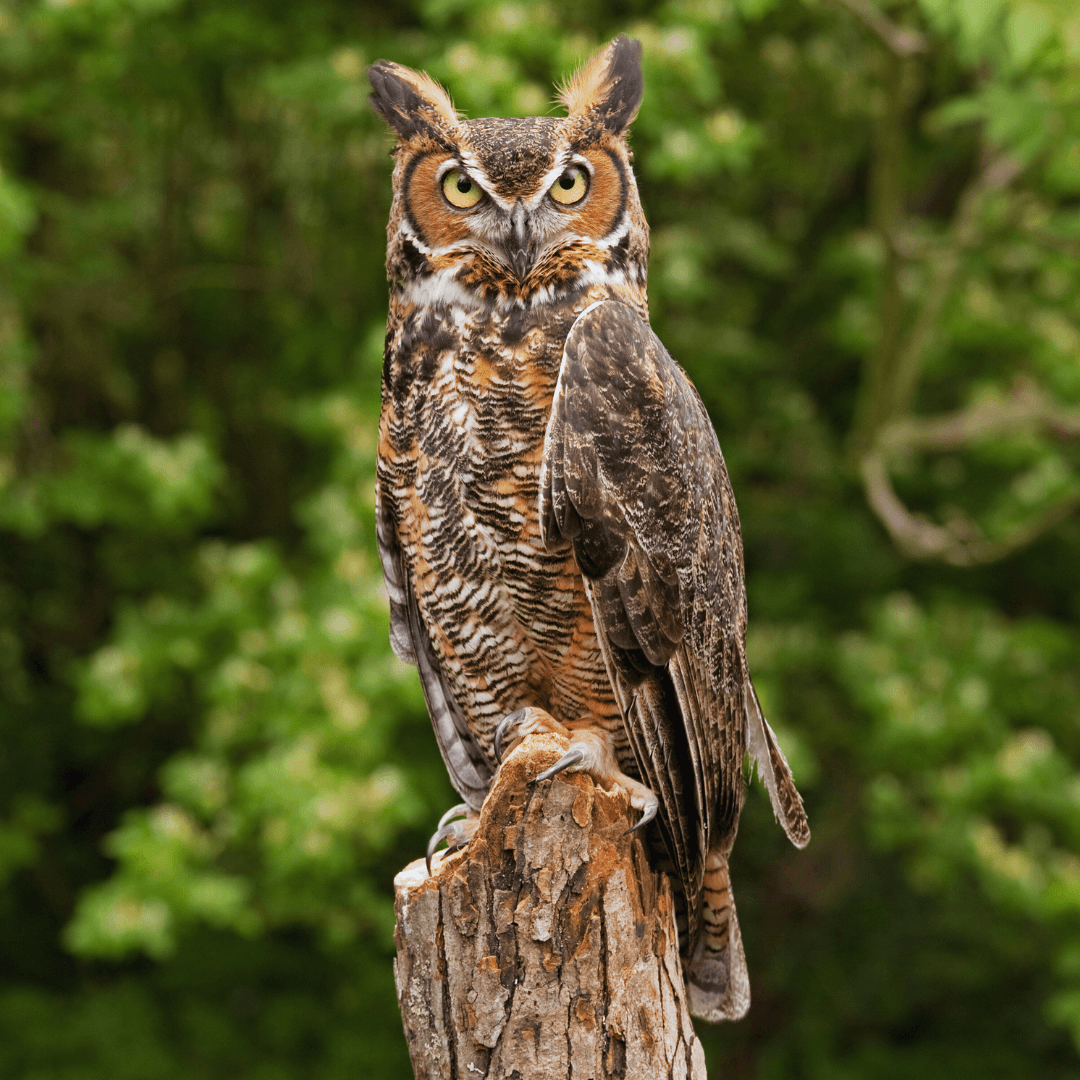
1. Great Horned Owl
The Great Horned Owl is a powerful and adaptable bird. Its wingspan ranges from 3.3 to 4.8 feet, and its weight is between 2 and 5.5 pounds. It is characterized by its tufted “horns” and striking yellow eyes.
This owl inhabits various environments across the Americas, from dense forests to urban areas, demonstrating remarkable flexibility in its habitat preferences.
It preys on many animals, including small mammals, birds, and reptiles, making it an important predator in its ecosystem. Its iconic hoots are familiar in many regions, highlighting its presence.
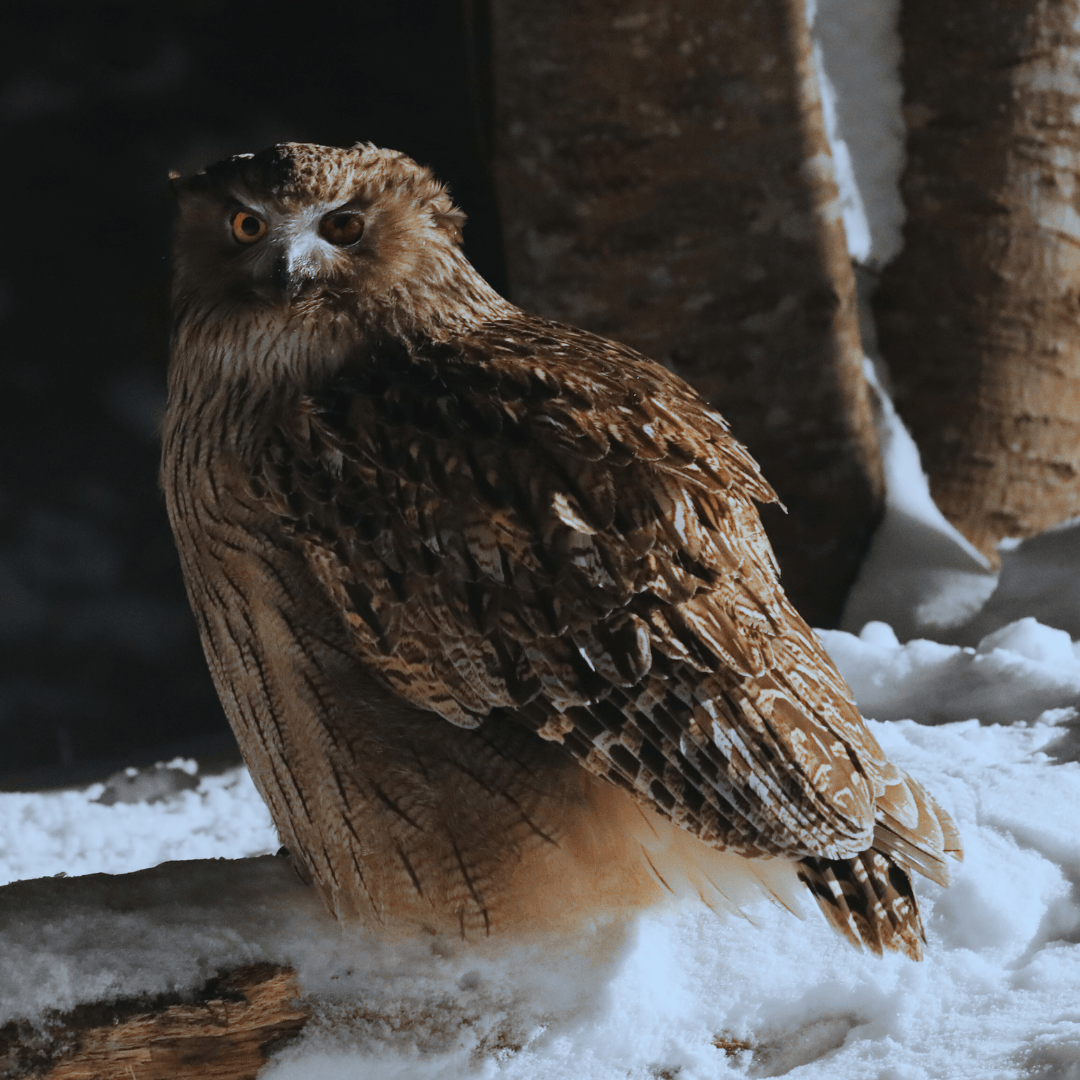
2. Blakiston's Fish Owl
The Blakiston's Fish Owl is one of the largest owl species, boasting a 5 to 6-foot wingspan and a weight of 4.5 to 10.5 pounds.
This majestic bird is primarily found in riparian forests in Russia, Japan, and China, relying on water bodies for hunting. It specializes in catching fish, using its keen eyesight and powerful talons.
The Blakiston's Fish Owl prefers old-growth forests, which provide essential cover and nesting sites. The necessity to preserve wetland habitat is reflected in its conservation status, which is concerning due to habitat loss.
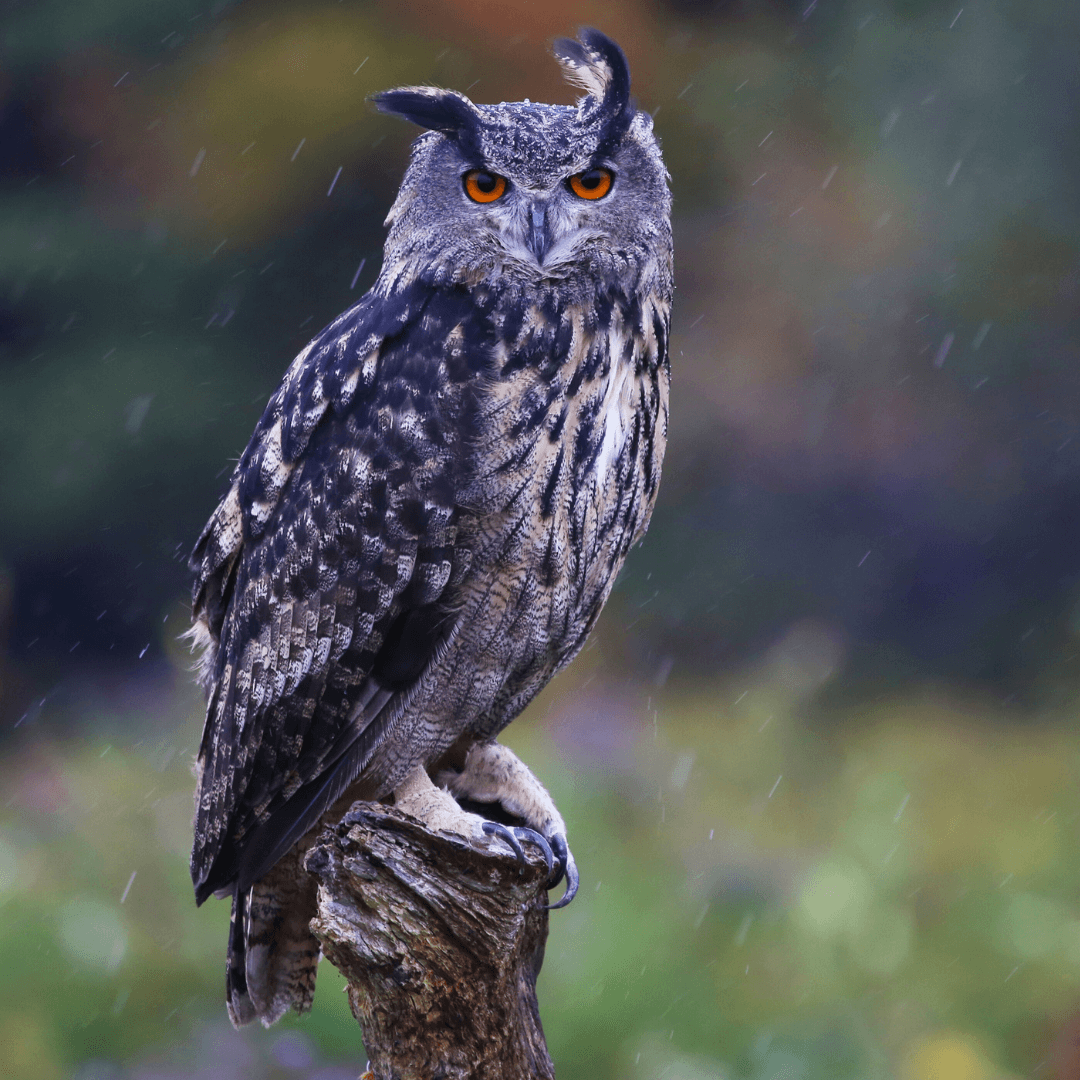
3. Eurasian Eagle Owl
The Eurasian Eagle Owl is a striking bird with a wingspan of 4.6 to 6.6 feet and a weight ranging from 1.6 to 4.6 pounds.
Known for its distinctive ear tufts and vibrant orange eyes, this owl is found across Europe and Asia in various habitats, including mountains, forests, and rocky outcrops.
Its powerful build allows it to hunt larger prey, such as hares and birds. The Eurasian Eagle Owl’s adaptability and wide distribution make it a significant predator, vital in maintaining ecological balance in its diverse environments.
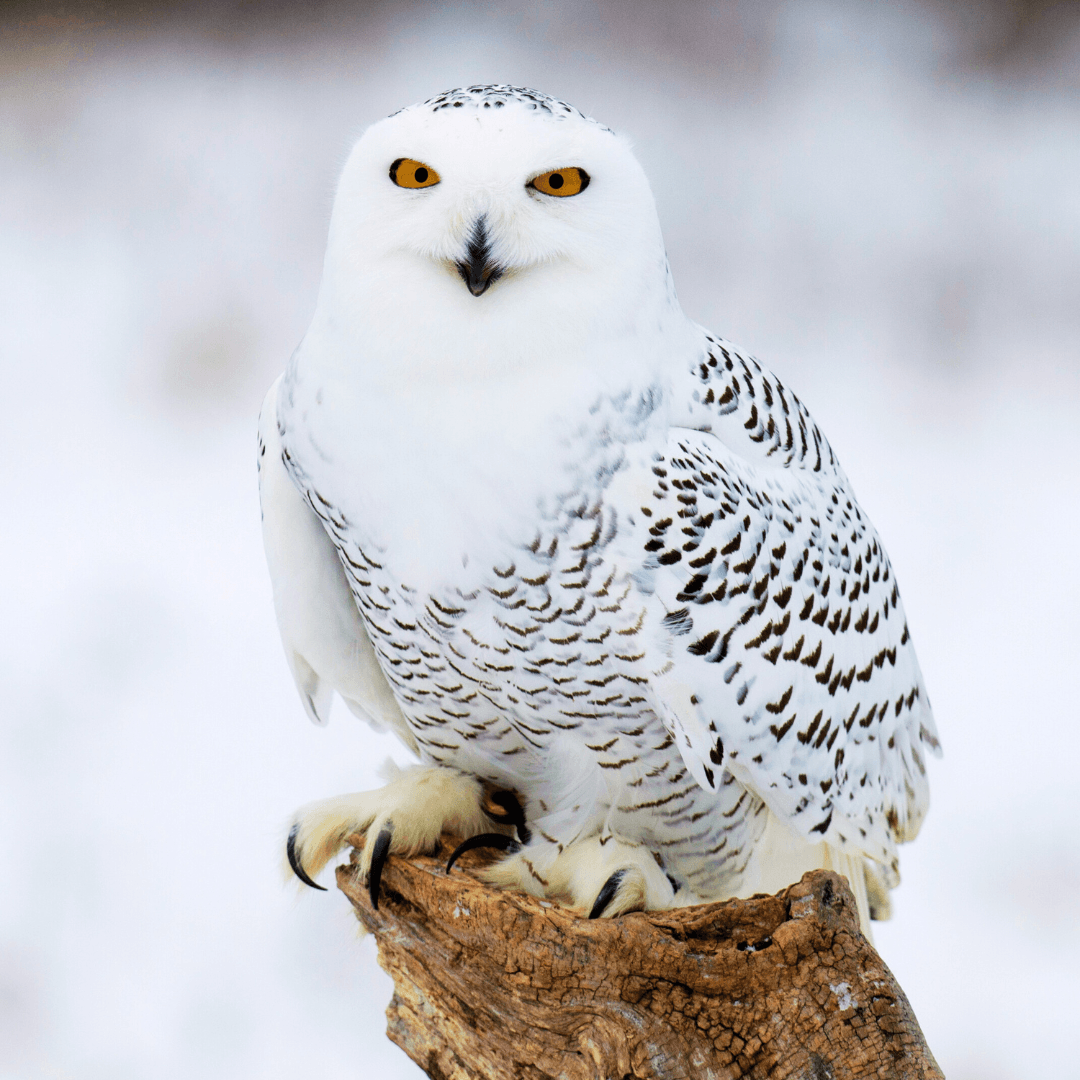
4. Snowy Owl
The Snowy Owl is a captivating bird known for its striking white plumage and large wingspan of 4.3 to 4.8 feet. It weighs between 3 and 6.5 pounds and is well-adapted to cold environments. It is native to the Arctic regions of North America and Eurasia.
The Snowy Owl primarily preys on small mammals, especially lemmings. Its hunting style involves silently gliding over snow-covered terrain.
The snowy owl nests on the ground in tundra habitats during the breeding season. Its iconic appearance has made it a symbol of the Arctic and a popular cultural subject.
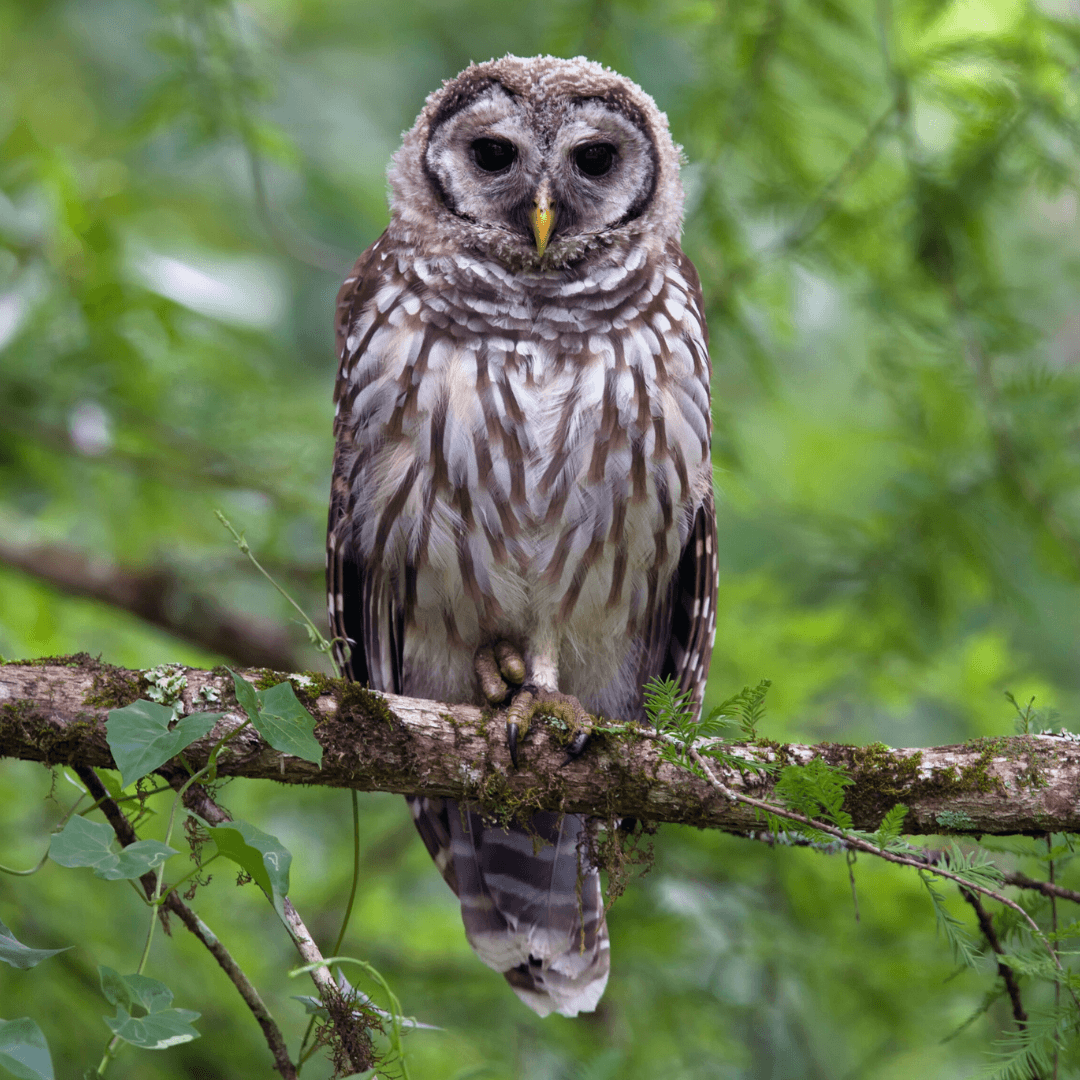
5. Himalayan Owl (Eastern Horned Owl)
The Himalayan Owl, also known as the Eastern Horned Owl, features a wingspan of 3.3 to 4.9 feet and weighs between 2.6 to 6.6 pounds.
This owl resides in the mountainous regions of the Himalayas, favouring dense forests where it can hunt and roost. Its distinctive ear tufts and mottled plumage provide excellent camouflage among the trees.
The Himalayan Owl is a nocturnal predator that primarily hunts small mammals and birds. Its capacity to flourish in harsh environments is evidence of its adaptability and the ecological role in preserving the ecological balance in its mountainous home.
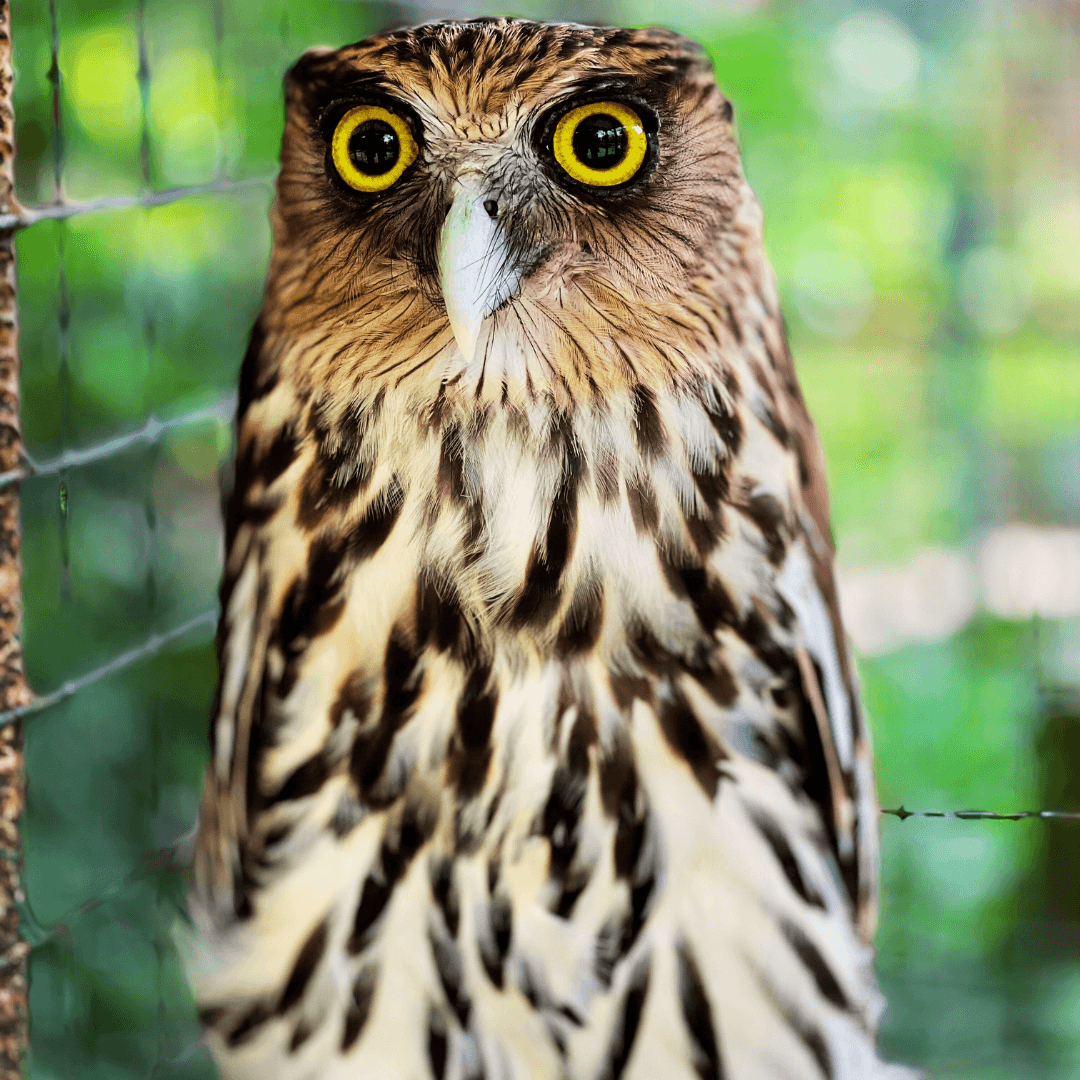
6. Philippine Eagle Owl (Pacific Horned Owl)
The Philippine Eagle Owl, or Pacific Horned Owl, boasts a wingspan of 3.3 to 5.3 feet and weighs between 3.5 to 8.5 pounds.
Native to the Philippines, this owl is adapted to thrive in dense forests, where it can easily camouflage itself among the foliage.
Known for its striking features, including prominent ear tufts and large, expressive eyes, the Pacific horned owl primarily hunts small mammals and birds.
Its presence is crucial for controlling prey populations, and its conservation is vital due to habitat loss and fragmentation in its native range.
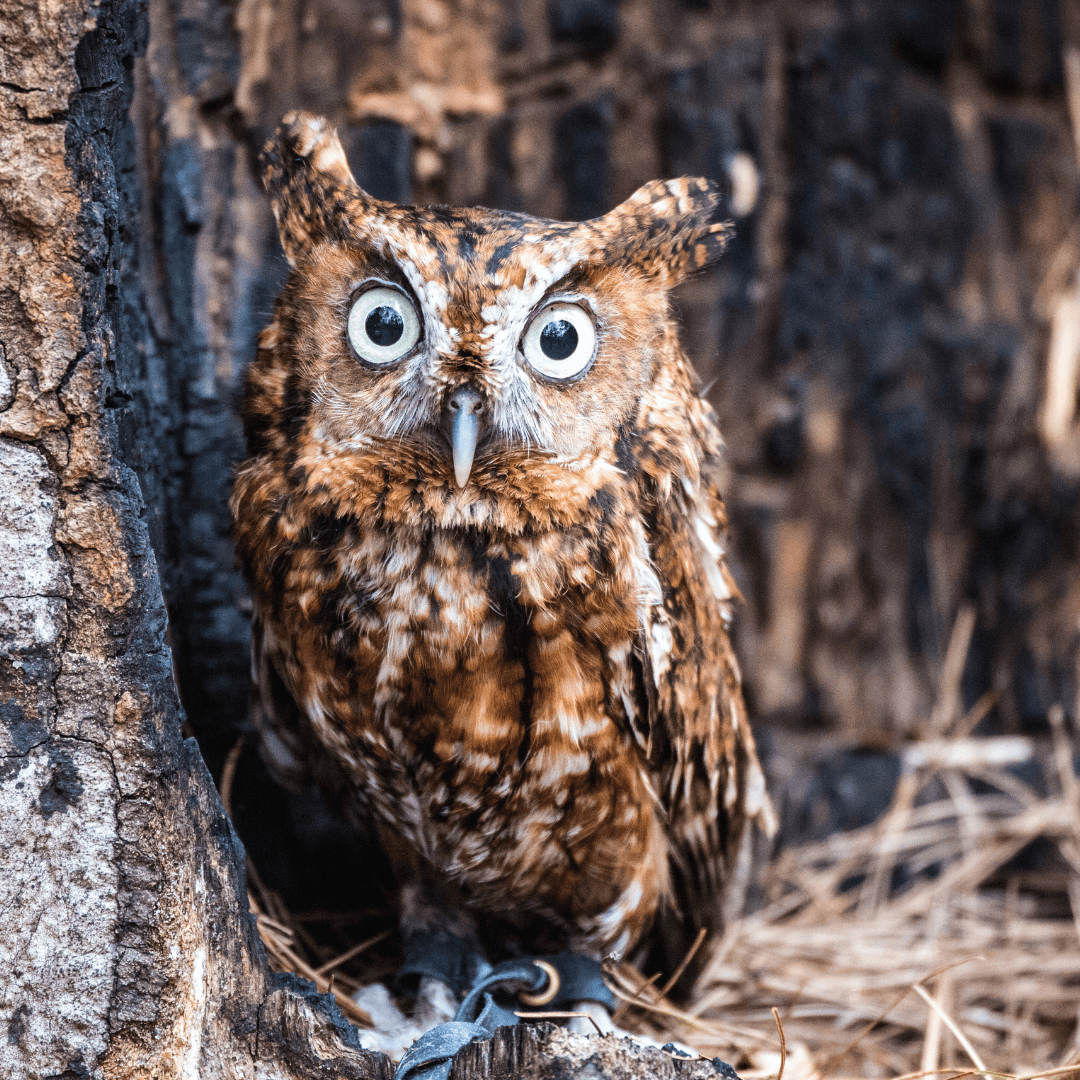
7. Screech Owl
Although the Screech Owl is not one of the largest owls in the world, it remains a captivating bird with its unique characteristics and adaptability.
The Screech Owl is a small but captivating bird. It has a 2—to 3-foot wingspan and weighs between 4.5 and 8.5 ounces. It is commonly found in North America and thrives in wooded areas, parks, and suburban settings.
This owl is renowned for its haunting calls that resonate at night, adding an enchanting element to its habitat. It is well-camouflaged, often blending into tree bark, which aids in avoiding predators.
The screech owl is a vital ecosystem component because it helps manage pest populations. Its primary food sources are insects and small mammals.
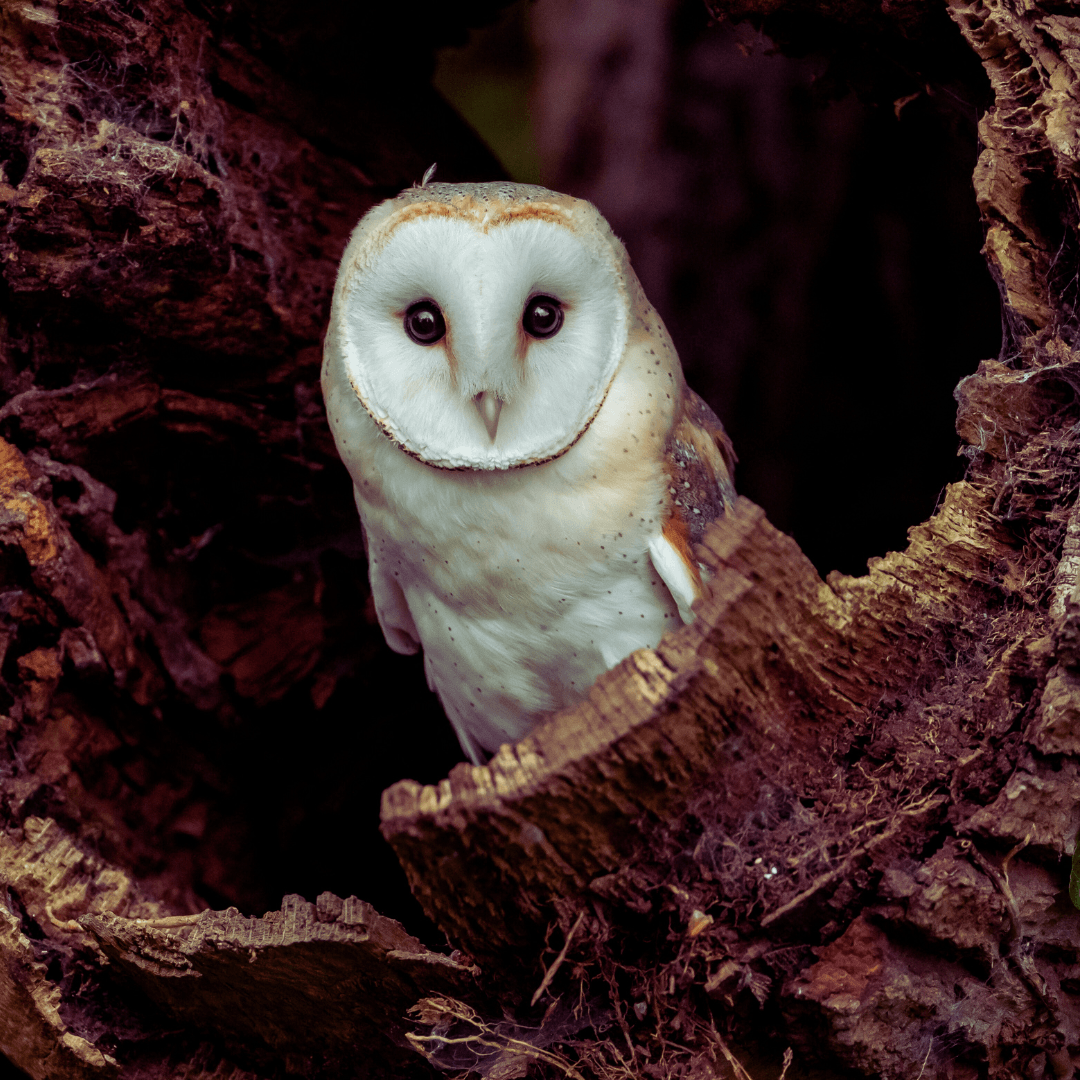
8. Barn Owl
The Barn Owl is a globally recognized bird characterized by its distinctive heart-shaped face, 3 to 4 feet of wingspan, and 1.5 to 2.6 pounds of weight.
Found in open fields, farmlands, and even urban areas, this owl is renowned for its silent flight and exceptional hunting abilities.
The barn owl's main meal is small rodents, which it finds in total darkness because of its keen sense of hearing. It is essential for maintaining rodent populations under control, which is advantageous for agricultural areas. Its ghostly appearance and gentle demeanour have made it a beloved species among birdwatchers.
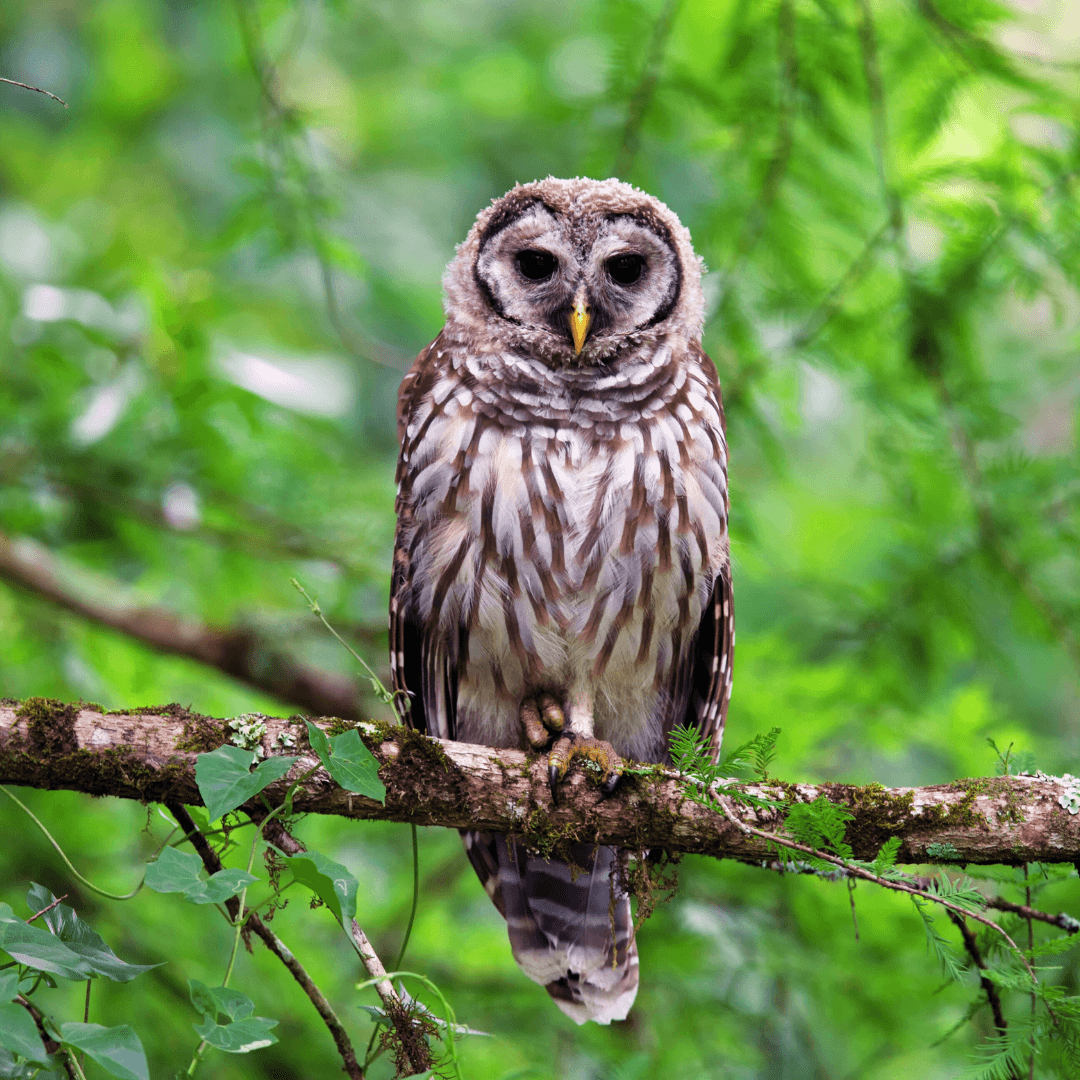
9. Lapp Owl (Tengmalm's Owl)
The Lapp Owl, also known as Tengmalm's Owl, has a wingspan of 2.5 to 3.5 feet and weighs between 5.5 and 12 ounces. This owl is primarily found in the boreal forests of Europe and Asia, where it thrives in dense woodlands.
The lap owl's round face and distinctive markings provide excellent camouflage among the trees. It hunts at night, specializing in small animals and birds.
It is especially known for its adaptability to different habitats and its role in maintaining the balance of its ecosystem through predation.
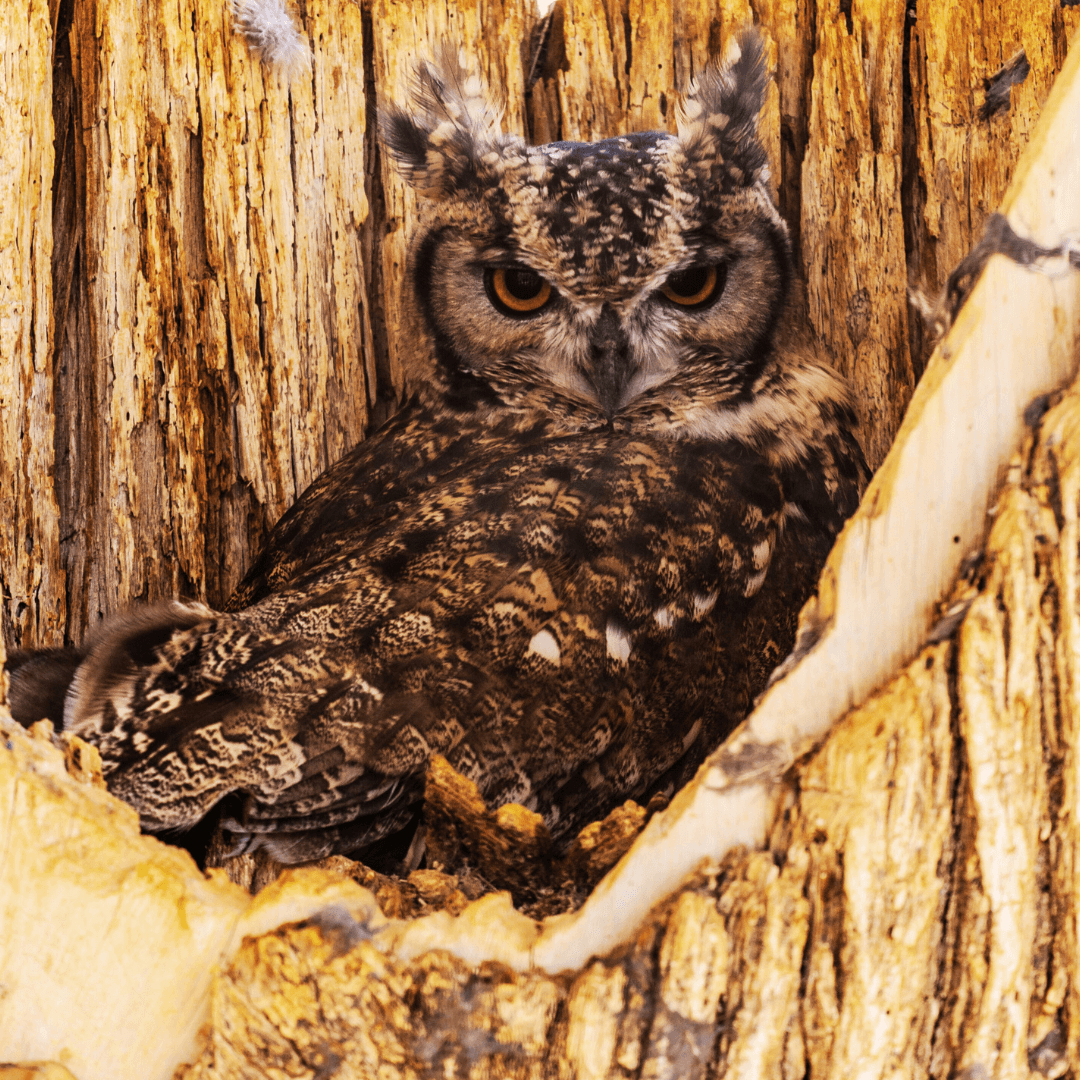
10. Spotted Owl
The Spotted Owl has a wingspan of 3.3 to 4.2 feet and weighs 1.5 to 2.4 pounds. It inhabits old-growth forests in North America and is recognized for its unique spotted plumage and silent flight.
This owl prefers mature forests that provide adequate nesting and hunting sites. It primarily preys on small mammals, including rodents.
A dwindling population connected to habitat degradation has made the Spotted Owl an iconic emblem of conservation efforts. Its presence in forest ecosystems underscores the importance of preserving natural habitats for wildlife.
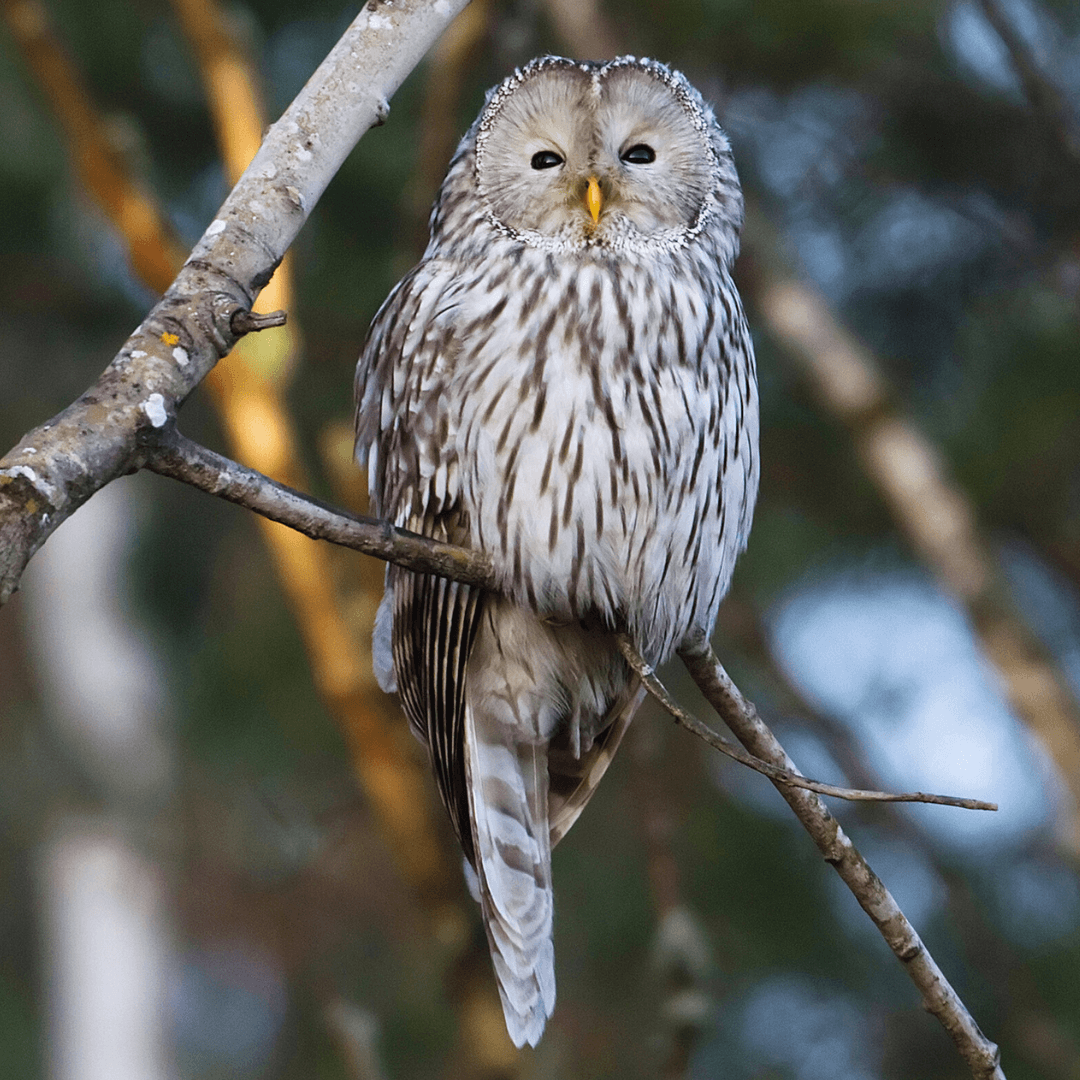
11. Ural Owl
The Ural Owl features a wingspan of 3.3 to 4.6 feet and weighs between 1.7 to 3.5 pounds. This owl is commonly found across Europe and Asia, preferring dense forests where it can blend into the surroundings.
Known for its distinctive round face and large, expressive eyes, the Ural Owl is primarily nocturnal and often vocalizes with mellow hoots.
It preys on small mammals and birds, utilizing its keen hearing to locate food in the darkness. Its reliance on mature forests makes it sensitive to habitat destruction, emphasizing the need for forest conservation.
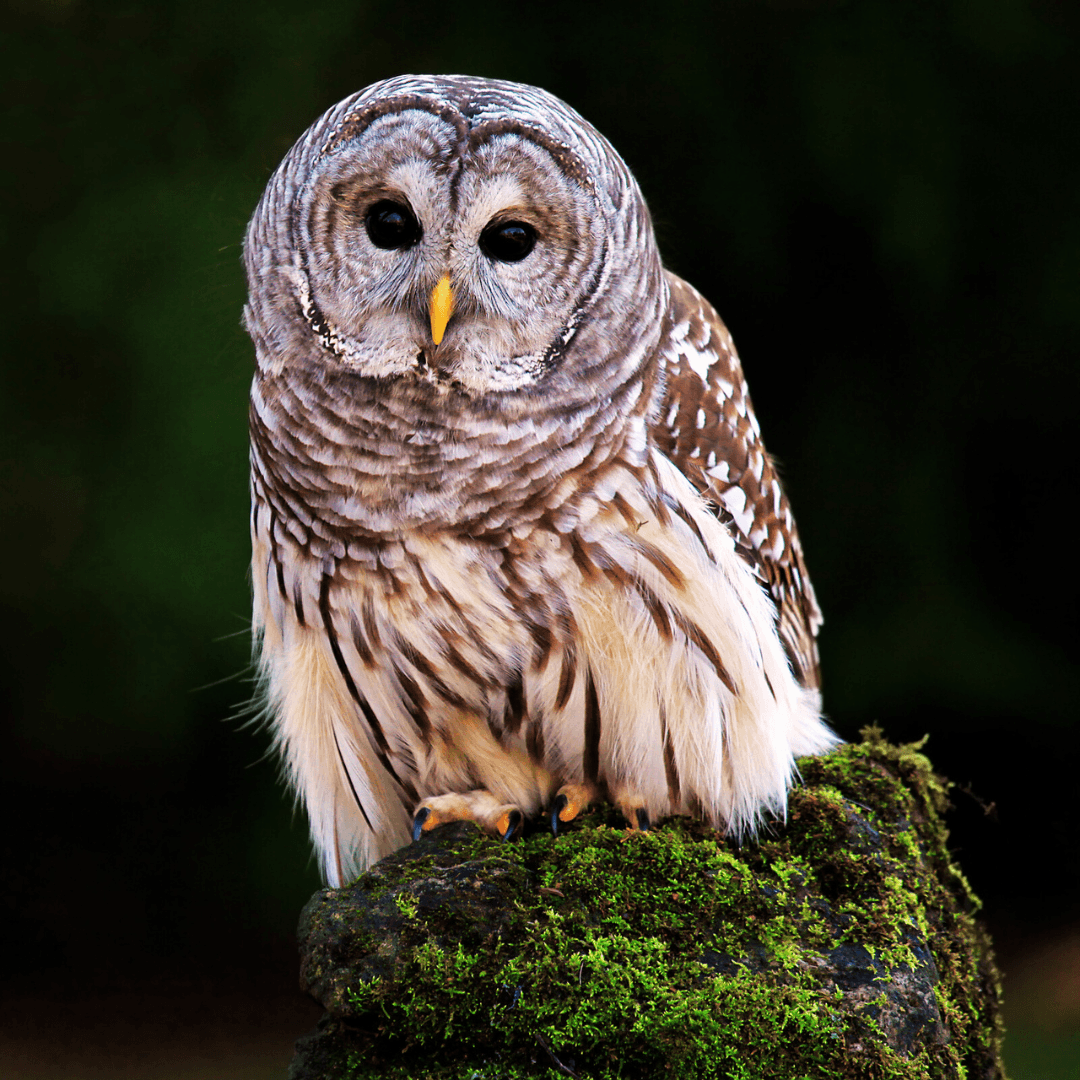
12. Barred Owl
The Barred Owl, which measures 3 to 4 feet in wingspan and weighs 1.5 to 2.6 pounds, is a well-known species across North America.
Barred owls are easily recognizable because of their striking striped plumage and distinctive call, “Who cooks for you?” which resonates in mature forests. They primarily inhabit woodlands, often perching on tree branches during the day.
Small animals, birds, and even amphibians are among their food sources. Conservation efforts are crucial because this versatile owl faces risks from habitat loss and competition with other owl species, even though it thrives in various settings.

13. Tawny Owl
The Tawny Owl, with a wingspan of 3.3 to 3.7 feet and a weight of 1.5 to 2.3 pounds, is widespread across Europe and Asia.
This owl prefers woodlands and is known for its distinctive round face and mottled brown plumage, which provide excellent camouflage.
Its haunting calls echo through the night, adding an eerie ambiance to its forest habitat. The Tawny Owl primarily hunts small mammals and birds, showcasing impressive nocturnal hunting skills. Due to habitat loss and urbanization, protecting its natural environment for continued survival is essential.
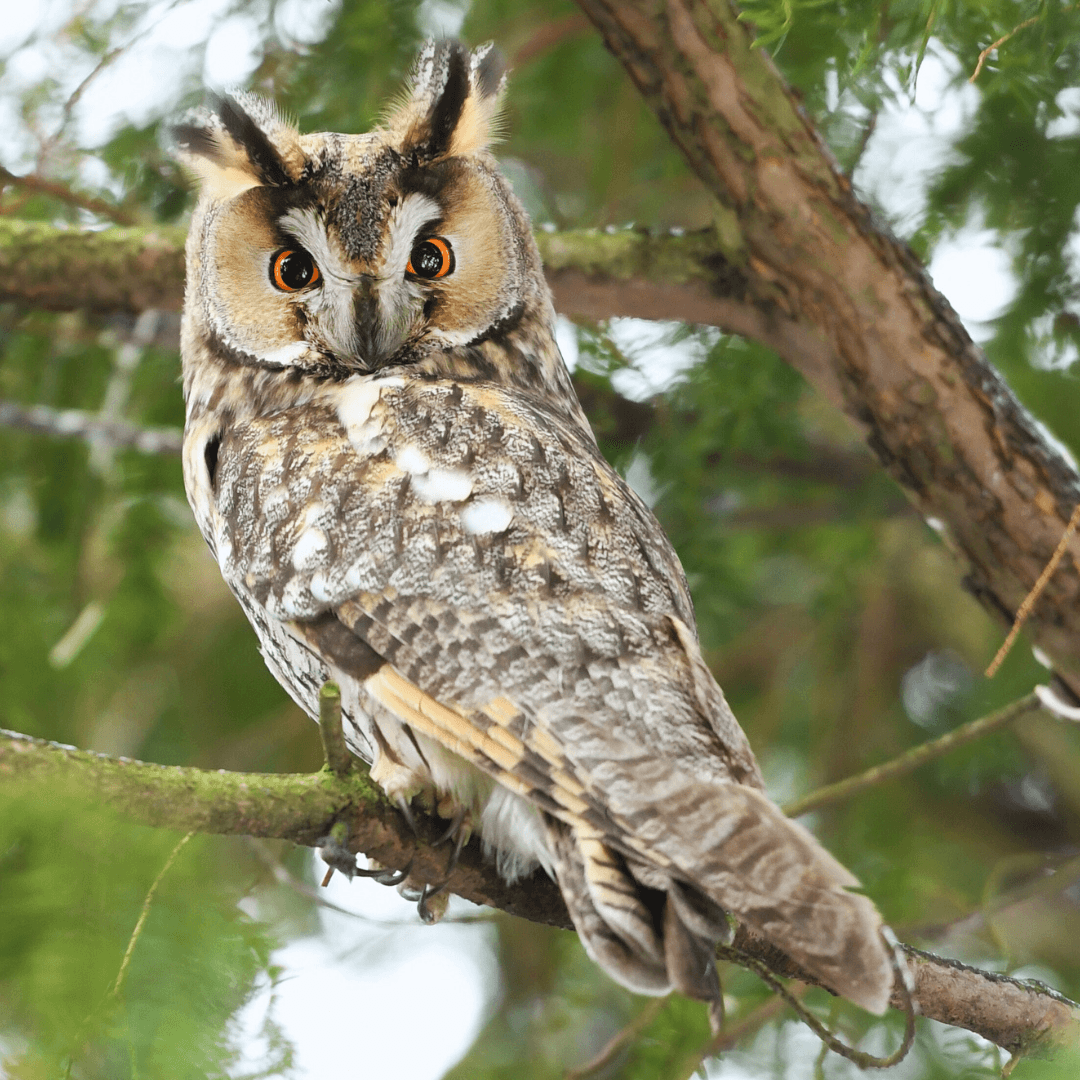
14. Long-Eared Owl
While the Long-eared Owl may not be among the largest owls in the world, its distinctive features and habitat preferences make it a fascinating species to observe.
The Long-eared Owl is notable for its long ear tufts, wingspan of 3.3 to 4.2 feet, and weight of between 1.3 and 1.9 pounds.
Found in Europe, Asia, and North America, this owl prefers dense stands of trees or shrubland, which can remain hidden during the day.
Its mottled brown and buff plumage helps it blend into its surroundings. Known for its distinctive, soft hoots, the Long-eared Owl primarily hunts small mammals, especially voles, using its excellent hearing to locate prey. Its reliance on specific habitats underscores the importance of preserving natural landscapes.
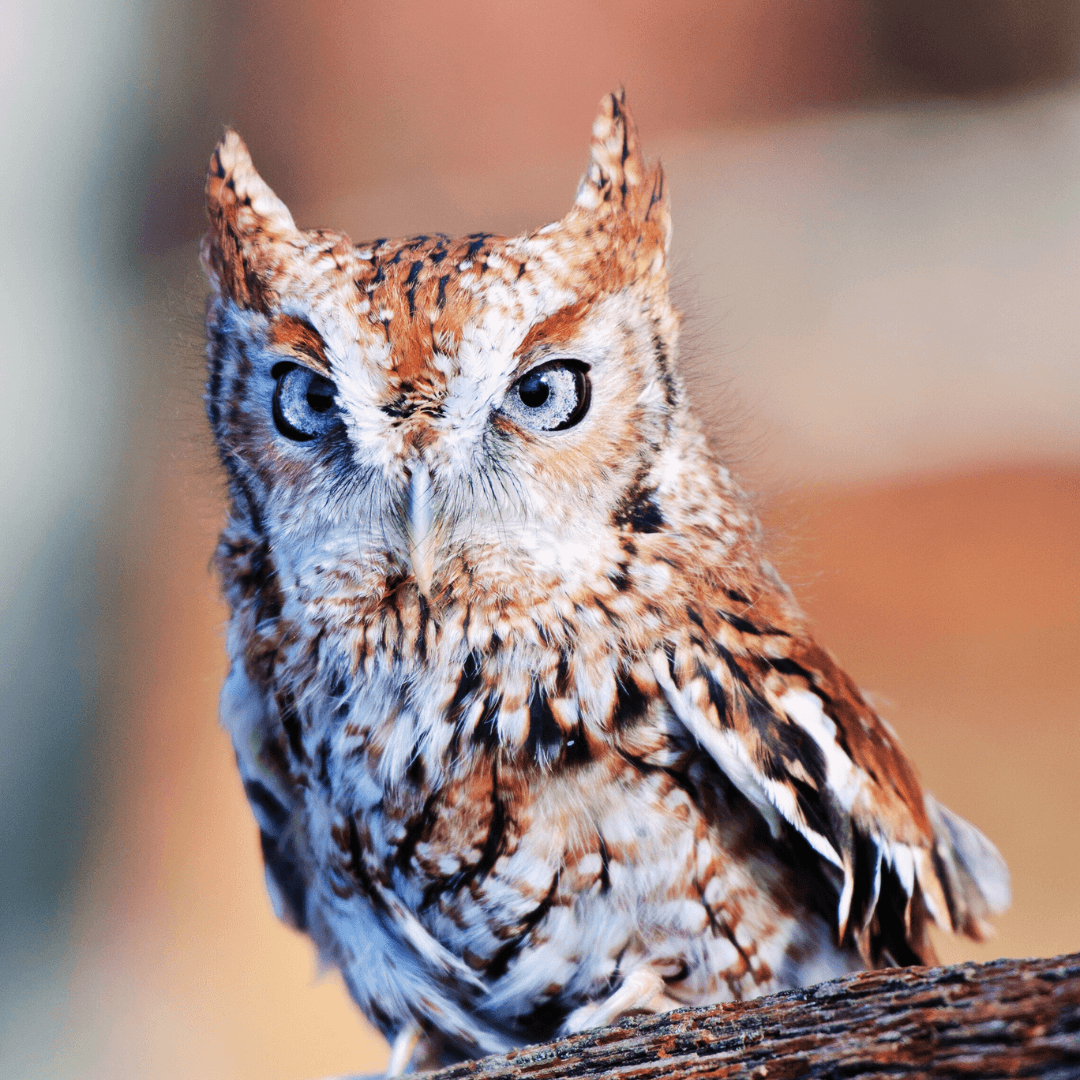
15. Eastern Screech Owl
The Eastern Screech Owl is a small, charming bird with a wingspan of 2 to 3 feet and a weight of 4.5 to 8.5 ounces. Common in the eastern United States, it thrives in woodlands, parks, and residential areas.
Its gray or reddish-brown plumage allows it to blend into tree bark, making it an adept ambush predator. This owl is known for its distinct vocalizations, which vary in pitch and tone.
Feeding primarily on insects and small mammals, the Eastern Screech Owl is vital in controlling pest populations, showcasing its ecological importance.
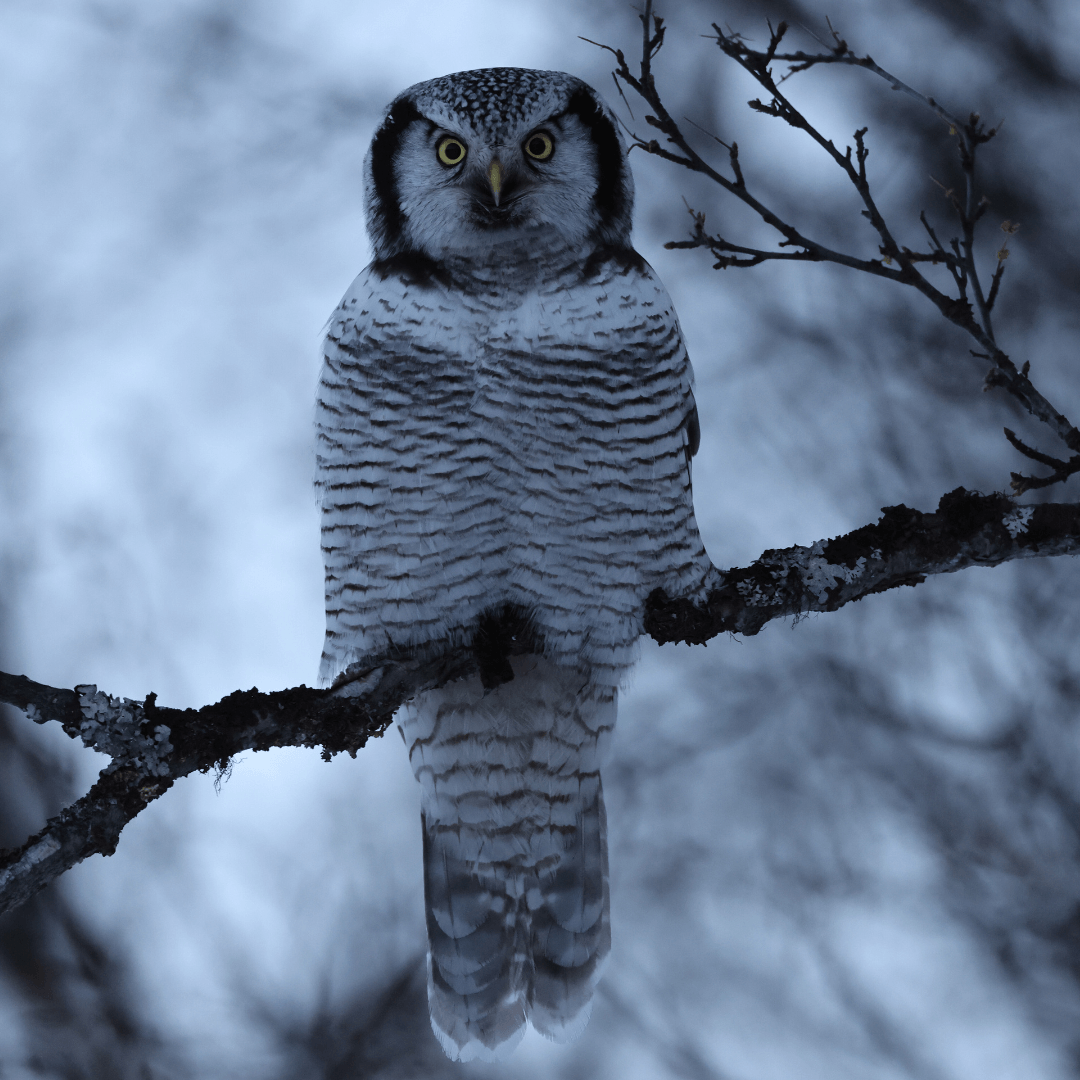
16. Northern Hawk Owl
The northern hawk owl is mostly found in boreal woods in Canada and some areas north of the United States. It has a wingspan of 2.5 to 3.3 feet and weighs 7 to 14 ounces. This striking owl is known for its unique hunting style, often perching on treetops to scan the ground for prey.
With large yellow eyes and a distinctive facial pattern, the Northern Hawk Owl is well-adapted for hunting small mammals and birds. Its diurnal behaviour sets it apart from most owls, making it a fascinating subject for birdwatchers and researchers alike.
FAQ
1. Where Can I Find The Great Horned Owl?
The Great Horned Owl is a widespread bird in the Americas, living in urban areas, woodlands, and deserts.
2. How Do Owls Hunt At Night?
Owls have excellent night vision and acute hearing, allowing them to detect and capture prey in the dark.
3. What Do The Largest Owls Typically Eat?
Larger owls typically hunt small mammals, birds, and fish, depending on their environment and the availability of food sources.
4. Why Are Some Owl Species Endangered?
Threats such as habitat loss, climate change, and human activity are decreasing the populations of many owl species.
5. Can Owls Turn Their Heads All The Way Around?
While owls can turn their heads nearly 270 degrees, they cannot turn them all around due to bone structure.
6. What Kills Owls?
Owls can be killed by predators like hawks, eagles, foxes, and humans, as well as habitat loss and poisoning.
Conclusion
In conclusion, the world's largest owls are noteworthy not only for their size but also for their essential contributions to preserving ecological equilibrium.
As we appreciate their beauty and importance, we must advocate conserving their habitats. By protecting these majestic birds, we ensure that future generations can marvel at their presence and vital contributions to our ecosystems.
I trust you enjoyed this article on Largest Owls In The World: Majestic Giants Of The Wild. Stay tuned for more blog posts soon. Take care!
JeannetteZ
>>>Please click here to read my all-inclusive article about Why Is Wildlife Important And How Can We Protect It<<<
Your Opinion Is Important To Me
Do you have thoughts, ideas, or questions? I would love to hear from you. Please leave me your questions, experiences, and remarks about this article, Largest Owls In The World: Majestic Giants Of The Wild, in the comments section below. You can also email me at Jeannette@Close-To-Nature.org.
Disclosure
This post may contain affiliate links. As an Amazon Associate and other affiliate programs, I earn from qualifying purchases at no extra cost to you. Please read my full affiliate disclosure.
You might also enjoy these blog posts:
Interesting Facts About Owls That Will Fascinate You
Best Container Flowers For A Thriving Garden
Best Container-Grown Vegetables
How To Grow Wildflowers In Pots
The Power Of Sound Frequency Healing


